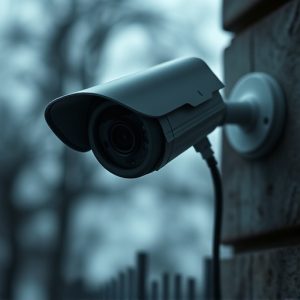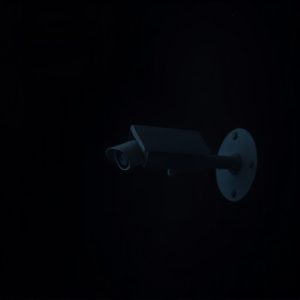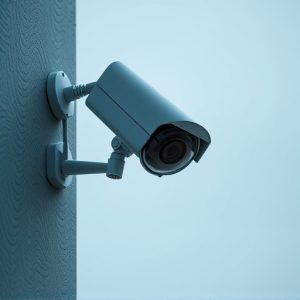Hidden in Plain Sight: The Evolution and Ethics of Secret Surveillance Cameras
Hidden security cameras play a critical role in modern surveillance by providing high-quality, discr…….
Hidden security cameras play a critical role in modern surveillance by providing high-quality, discreet monitoring while maintaining the aesthetics and integrity of various environments. These advanced cameras are strategically positioned to capture footage undetected, offering round-the-clock surveillance regardless of lighting or weather conditions. Equipped with motion detectors and infrared capabilities, they ensure effective crime prevention and contribute significantly to ongoing investigations. The ethical deployment of these cameras requires careful consideration of legal standards and privacy rights, emphasizing the importance of transparency and responsible data management. In essence, hidden security cameras represent a sophisticated balance between maintaining public safety and upholding individual privacy, making them an indispensable tool in contemporary society's efforts to protect assets and ensure public well-being, while respecting the visual harmony and personal dignity of the spaces they monitor.
In an age where safety and privacy intertwine, hidden security cameras stand as silent sentinels, safeguarding public and private spaces with a watchful yet inconspicuous gaze. This article peels back the layers of surveillance technology to explore their pivotal role in modern security systems, the advanced techniques that enable them to capture crystal-clear footage without alerting the unwary, and the complex legal and ethical landscapes they navigate. As we delve into the world of covert monitoring, it’s clear that these devices are more than just technological marvels; they are a cornerstone in our collective quest for security while respecting individual privacy rights.
Unveiling the Discreet Sentinels: The Role and Placement of Hidden Security Cameras in Modern Surveillance
Hidden security cameras serve as modern society’s discreet sentinels, subtly woven into the fabric of everyday environments to enhance safety and security. These covert surveillance devices are strategically placed in locations where they remain unnoticed by the public yet capture clear visuals of activities unfolding within their view. Their role is multifaceted; from protecting private property to safeguarding public spaces, these cameras offer a 24/7 vigilant eye that deters criminal activity and aids in investigation and enforcement efforts. The placement of hidden security cameras is critical, as it dictates both the level of surveillance and the potential for intrusion detection. These cameras are often installed at blind spots or less conspicuous areas where they can operate without drawing attention, yet still offer comprehensive coverage. They are equipped with advanced technologies such as motion sensors and infrared capabilities, allowing them to function effectively around the clock, under any lighting condition, and in various weather scenarios. The integration of these covert surveillance tools into our environments underscores the importance of balancing security measures with respect for privacy. As such, the use of hidden security cameras is a testament to the ongoing evolution of surveillance technology and its role in maintaining public safety and order.
Technical Insights: How Hidden Security Cameras Capture High-Quality Footage Without Drawing Attention
Hidden security cameras have become a cornerstone in safeguarding both private and public spaces due to their ability to discreetly capture high-quality footage. These sophisticated devices are engineered with cutting-edge technology that enables them to blend seamlessly into their surroundings, often going unnoticed by onlookers. They utilize advanced imaging sensors, coupled with high-definition lenses, to provide clear and detailed visuals even in low-light conditions. The cameras are often disguised as everyday objects or installed in areas with natural concealment, such as behind two-way mirrors or within smoke detectors or clock faces. This level of stealth ensures that potential threats are unaware of their presence, providing property owners and security personnel with a watchful eye that remains hidden from view, thus protecting the sanctity of the observed spaces without overtly altering their aesthetic.
Moreover, the integration of motion detection and intelligent software algorithms allows these cameras to focus only on significant events, minimizing the amount of unnecessary data recorded and stored. This not only conserves valuable storage space but also streamlines the post-event investigation process by providing targeted footage that captures only the relevant activities. The combination of their discreet nature and high-resolution capabilities makes hidden security cameras an invaluable tool for maintaining security without compromising on design or functionality. Their unobtrusive operation ensures that they remain a deterrent against criminal activity, while also respecting the visual integrity of the environment in which they are placed.
Legal and Ethical Considerations: Navigating the Boundaries of Privacy and Monitoring with Hidden Security Cameras
The deployment of hidden security cameras raises a myriad of legal and ethical concerns that are critical to navigate in the pursuit of maintaining safety while upholding individual privacy rights. Legally, the use of such cameras is governed by an intricate web of state and federal laws, which vary across jurisdictions. These laws dictate where and how covert cameras can be installed and monitored, with strict provisions to protect citizens’ right to privacy. For instance, in many regions, it is unlawful to place hidden cameras in areas where individuals have a reasonable expectation of privacy, such as personal living spaces or private business offices.
Ethically, the use of hidden security cameras prompts a deeper reflection on societal values and norms surrounding surveillance and privacy. Organizations implementing these devices must consider the ethical implications of their actions, ensuring that the benefits of enhanced security do not come at an unacceptable cost to individual dignity and autonomy. Transparency about the existence and purpose of hidden cameras is paramount, as is the establishment of clear policies on data storage and access, to prevent misuse or the potential for abuse by those who manage the surveillance systems. The ethical framework must prioritize the protection of personal privacy while still allowing for the legitimate needs of security and law enforcement to be met in a balanced manner.


